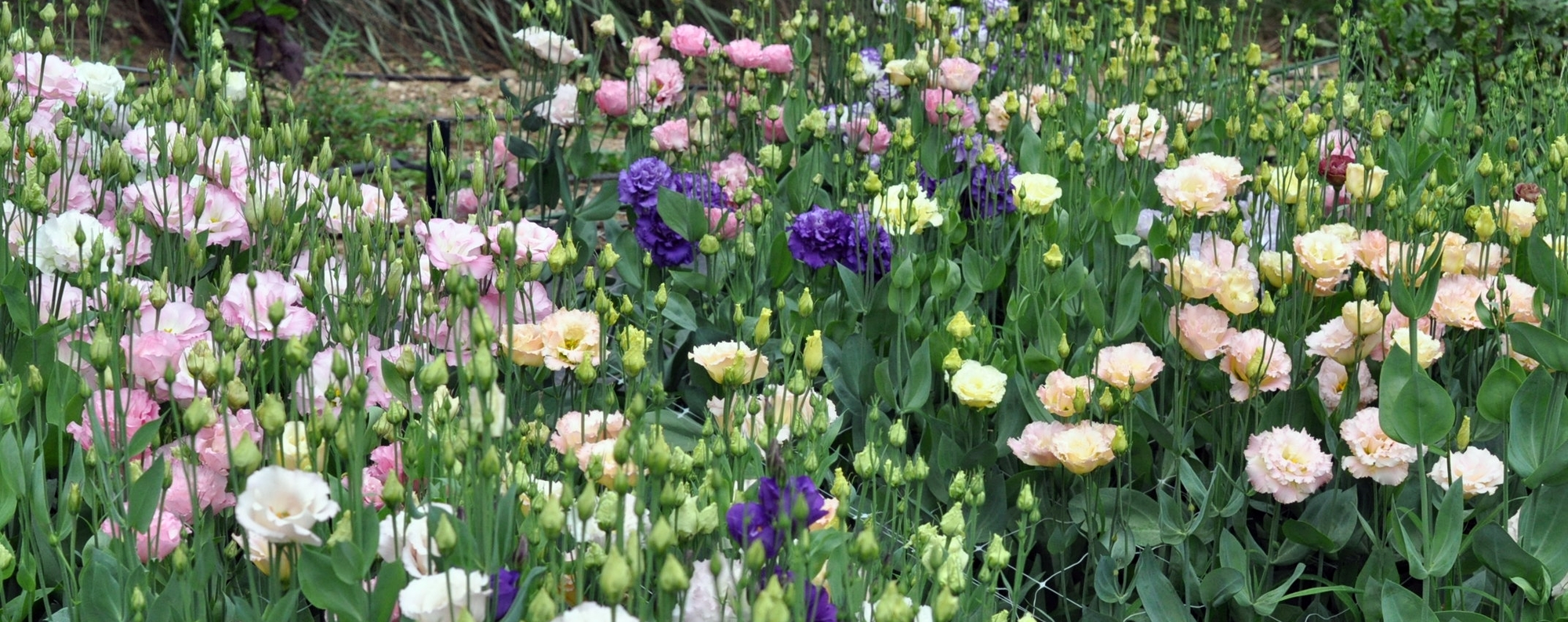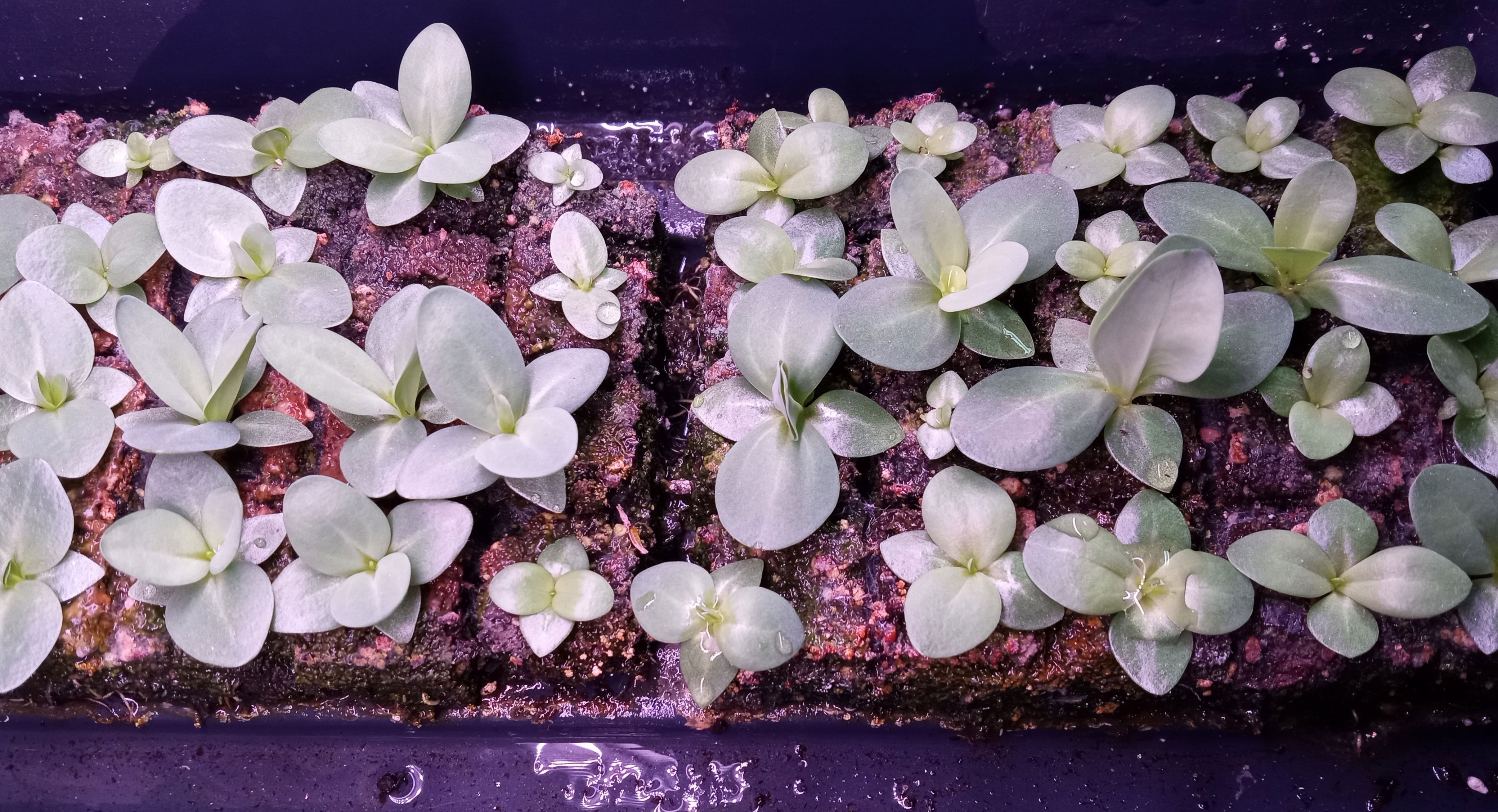Growing Lisianthus from Seed

Growing lisianthus from seed can be challenging, but it's not so much that it is difficult but that it takes regular care and a whole lot of patience! It takes about 120 days from sowing the seed until it is ready to be transplanted into the garden. I like to plant as close as possible to New Years Day here in zone 7A so that they are ready to plant out on April 1 or possibly the week before. But of course that will vary depending on your growing zone.
I prefer planting the seed in small soil blocks as shown in the photo below, but you can also use plug trays with potting soil. When you first plant, your growing medium should be very moist. The seed, which has a pelleted coating, should be placed on top the soil and either not covered at all or only with a very light coating of vermiculite. Many people find that using the tip of a moistened toothpick is the easiest way to accurately place the seeds where you want them to grow.
Once the seeds are in place, they should be covered with a humidity dome (or some people use plastic wrap over the top of the container) and placed under grow lights and on top of a heat mat. Lisianthus sprouts well at around 75 degrees fahrenheit, so if your heat mat has a thermostat you can set it at that. If yours is like mine and does not have a thermostat, it usually raises the temperature about 20 degrees above the ambient temperature. So I usually keep mine in a cool room around 55-58 degrees so that the heat mat brings the temperature up to around the optimal germination termperature. The seeds benefit from a mist of water over top to help dissolve the pelleted coating, but if the humidity dome has a good seal they shouldn't need further watering for a few days. They should start sprouting in about 10 days. I usually bottom water mine once in that time.
After most of the seeds have germinated the humidity dome should be removed, but they can still stay on the heat mat if the room is cool, or they could be moved to a warmer room. They should not ever be allowed to get warmer than 80 degrees. Too high of temperatures can result in rosetting, which can delay flowering. After the cover has been removed, I find that water every other day is usually ideal, but you can find what works best for you. They should not ever be left in standing water and also should not be allowed to get totally dry. Mildew will usually grow on the surface of the potting soil, which is fine, but it can hinder your ability to tell how moist the soil is. I recommend fertilizing with a diluted fish & seawead fertilizer (I use Neptune's Harvest) starting about a month after planting and continuing about once a week as long as they're inside.
Lisianthus can be planted into the garden three or four weeks before the last frost (after hardening off). They can handle a light freeze but should be covered if the temperatures drop below 28 degrees (or below 32 degrees when they are first planted out before they are fully established). It is important to get them in the garden before the heat gets to its full intensity. They do well in full sun but benefit from afternoon shade in warmer climates.
I strongly recommend horizontal netting for lisianthus. Although it makes harvesting a little more tedious, if they are not netted, the weight of the flowers will often cause them to topple when there is strong wind and/or a rain storm. If you're growing a tall variety, it can be beneficial to do two layers of netting, one at 8-10 inches and another at 16-18 inches.



